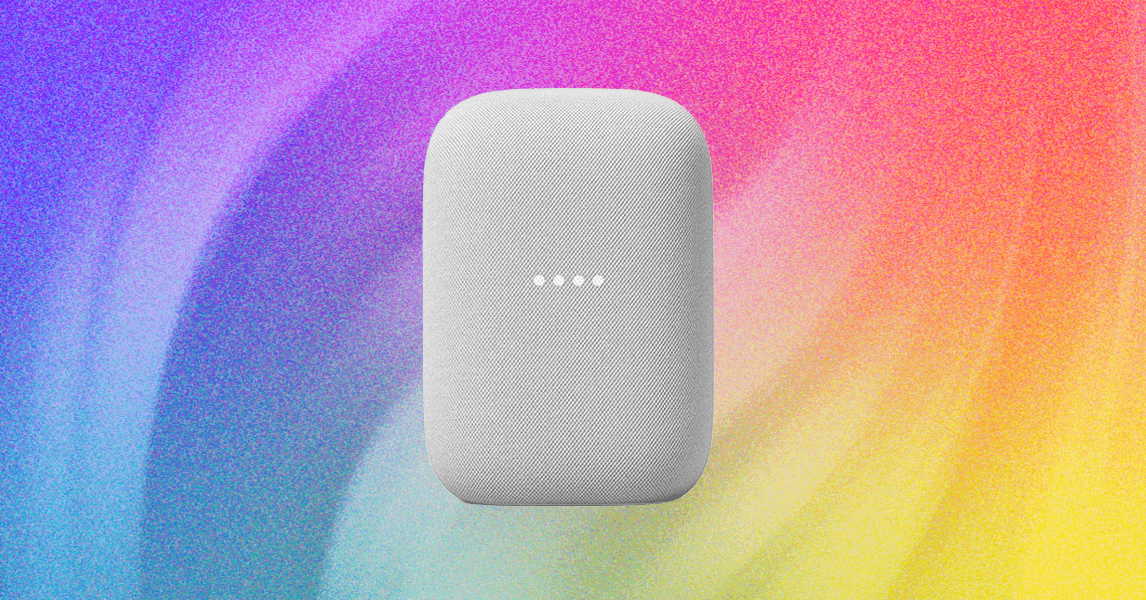What About Gemini for Home?
Google has announced Gemini for Home, the new version of its voice assistant. Gemini for Home is rolling out in early access to existing users with Google’s ecosystem of devices, and most of its existing smart speakers and displays will be backward compatible—one notable exception is the Google Pixel Tablet.
Gemini for Home will eventually replace the current Google Assistant. Unlike Alexa+, Gemini for Home will always be free. Instead, Google is changing its camera subscription, Nest Aware, to become a subscription for Gemini for Home. That subscription will have two tiers, similar to the current Nest Aware subscription, with similar options: Standard ($10 a month) and Advanced ($20 a month). The subscription will now include both camera storage and features, plus features for the smart assistant itself. That will include advanced options like Gemini Live, which is a more conversational chat mode you can activate on a smart speaker, and the ability to ask Gemini for video history and get AI notifications and descriptions. Users will also get a customized summary at the end of the day called Home Brief. You’ll also get 30 days of video event history plus intelligent alerts for its cameras on the Standard plan, or 60 days and 24/7 video history with the Advanced plan.
What About Google’s New Speaker?
Google has a new speaker coming for the first time in years. The Google Home Speaker (yes, that’s almost the exact same name as the original Google smart speaker from 2016) looks like a taller Nest Mini, but we expect it to replace the Nest Audio as it has the same $99 price tag. It’s due out in spring 2026, so Gemini for Home will already reach existing devices before this new one arrives. We’ll update this guide with notes once we get a chance to test it, and will keep an eye out for any other changes in Google’s smart speaker lineup.
Honorable Mentions
Google Nest Hub for $100: This is the smaller version of the Nest Hub Max, and while the 7-inch screen isn’t too small compared to something like the five-inch Echo Show 5, it’s still too small to really enjoy the screen. It does have sleep tracking software built in and no camera, so it’s a good choice for a bedside table.
Google Nest Max for $119 (Used): This discontinued speaker was a larger version of the Nest Audio. It was a good speaker, albeit large and unwieldy to place in your home.
Sonos One for $179 (Refurbished): This was our favorite option for sound while it was available. It’s just about entirely replaced by the Sonos Era 100 now, which isn’t Google Assistant compatible. If you spot the One though and want the best Sonos speaker for Google Assistant, snag it.
Sonos Arc for $599: The Sonos Arc works with Google Assistant and is a great soundbar, but given that the Sonos’s newer lineup doesn’t work with Google Assistant, we don’t expect it to be compatible with the new Gemini for Home assistant that will start rolling out soon.
FAQs
What About Other Sonos Speakers?
We used to recommend the Sonos One in this guide, but it’s been just about fully replaced by the Sonos Era 100 ($220). Sadly, the Era 100 and the larger Era 300 ($479) don’t have Google Assistant support, unlike the One or other older Sonos speakers. Older versions of the Sonos Roam ($179) and Move ($445) have Google compatibility, for example, but the newest versions (Roam 2 and Move 2) don’t. The soundbars Arc and Beam still have Google Assistant support if you’re in the market for a Google-powered soundbar, but we don’t expect them to get compatibility with Google’s new assistant, Gemini for Home. If you’re curious for more details about Sonos, check out our guide to the Best Sonos Speakers, but it’s likely not a good investment if you’re set on using Google for your home assistant.
What About Third-Party Devices?
Google is no longer updating software for one of the third-party displays we previously recommended in this guide, the Lenovo Smart Display. If you have one, it will still work, but some features will likely suffer or disappear entirely as time goes on. Meanwhile, the Lenovo Smart Clock and Smart Clock Essential we used to recommend have both been discontinued, so we’ve removed them from this guide.
However, Google is planning to expand its smart home hubs into TV devices, which will include some third-party TVs. But that doesn’t necessarily mean Google’s voice assistant will be built in; they’ll be designed to run smart home commands from compatible apps and use Matter to communicate. That was slated for late 2024, but we’re waiting to see more on this front.
Google has also promised that its new assistant, Gemini for Home, will be available to third-party devices. We’ll see how that fares as the assistant rolls out.
How Can I Get the Most Out of My Google Smart Speaker?
The best way to really get the most out of your Google-powered smart speaker is to get compatible smart devices. You’ll want to look for the “Works with Google Home” label to know if something is Google Assistant compatible, though some compatibility could change as Google moves from Google Assistant to Gemini for Home on its smart home devices. You can find the current list here of compatible devices.
What Google Devices Will Be Gemini for Home Compatible?
Gemini for Home, Google’s new assistant, is slated to work with the following devices as of October 2025. The smart speakers marked with a ★ are also slated to be compatible with Gemini Live, an advanced feature you can access on one of the paid plans.
- Google Home (2016)
- Google Home Mini (2017)
- Google Home Max (2017)
- Nest Mini (2019)
- Nest Audio (2020) ★
- Nest Hub (2018)
- Nest Hub Max (2019) ★
- Nest Hub (2nd Gen) (2021) ★
- Nest Cam Indoor (2015)
- Nest Cam Outdoor (2016)
- Nest Cam IQ Indoor (2017)
- Nest Cam IQ Outdoor (2017)
- Nest Cam (battery) (2021)
- Nest Cam (wired) (2021)
- Nest Cam with Floodlight (2021)
- Nest Cam Indoor (2K) (2025)
- Nest Cam Outdoor (2K) (2025)
- Walmart Onn Indoor Camera Wired (2025)
- Nest Doorbell (wired, 1st Gen) (2018)
- Nest Doorbell (battery) (2021)
- Nest Doorbell (wired, 2nd Gen) (2022)
- Nest Doorbell (2K) (2025)
- Walmart Onn Video Doorbel Wired (2025)
How Does WIRED Test Google Speakers?
We test smart speakers like the above options from Google with a handful of tests. We do microphone tests, testing how far away a speaker will hear and respond to our question, both while music is playing and while music is off. We also play a variety of songs to see how well the speaker performs at playing everything from chill lo-fi to my favorite metal band. We also sync it with smart devices to see how well it connects and controls those devices, and what kind of capabilities it has. If there’s a screen, we also test the features included with that. Finally, we also live with these speakers for at least a week (if not more like months!) to see how they fare on day-to-day use and long-term performance.
How Does WIRED Acquire Smart Speakers? What Does WIRED Do With Them After Testing Them?
Most of our smart speakers are provided by companies who make them as press samples. These press samples are obtained with the understanding that no coverage is promised, nor are there any agreements about what that coverage will look like if it occurs. We also occasionally purchase our own speakers.
After testing, most smart speakers are kept for long-term testing or in storage for future comparison tests. If a smart speaker is deemed redundant, we usually locally recycle them, as it’s likely been deemed redundant since it won’t receive more updates or support from the original company. If it’s still a viable speaker, we’ll donate it locally instead.
Power up with unlimited access to WIRED. Get best-in-class reporting and exclusive subscriber content that’s too important to ignore. Subscribe Today.



